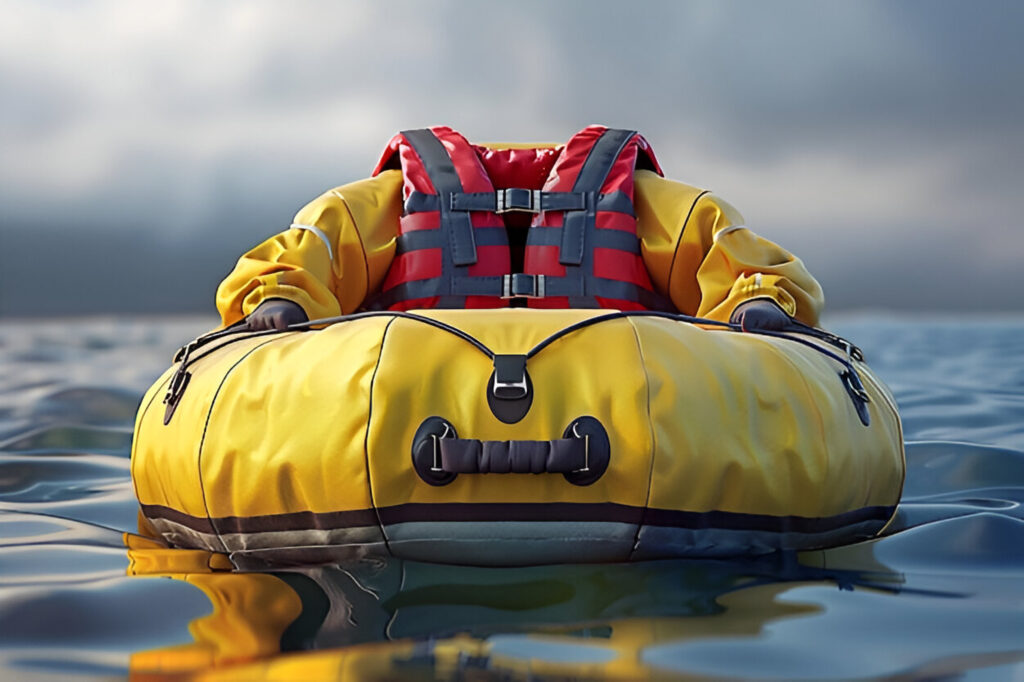How Life Rafts Work: From Inflation to Survival at Sea?

- Safety at sea is obviously a primary concern whether you’re out on a boat or working on a ship. Life rafts may literally make all the difference between calamity and survival when things go wrong. But just precisely how do life rafts operate? From their inflation to their survival aid when the water becomes your only choice, let’s examine their usefulness more closely.
What Exactly Are Life Rafts?
Made to be utilized in an emergency, such as should your ship sink or capsize, life rafts are small, inflatable boats. Their simplicity of use offers a floating, sturdy platform for survival in open water. Unlike ordinary boats, life rafts are designed just to keep you alive until assistance shows up.
The Inflation Process: How Life Rafts Are Ready in Minutes
Speed is everything in an emergency. Life rafts are thus built to inflate rapidly. Most contemporary life rafts are kept in a small container, either contained in a robust, waterproof casing or placed on the side of a vessel. The raft is fitted with a CO2 gas cylinder or an air compressor that automatically inflates the raft when triggered.
The inflating mechanism is normally automatic: once the container is opened, the gas cylinder is actuated, filling the raft within minutes. This speedy deployment is vital when you’re in an emergency, ensuring that you have a secure platform to evacuate to as soon as possible.
Once inflated, the life raft stays firm on the water’s surface, with a sturdy fabric that’s resistant to punctures and damage. The raft often incorporates a cover to protect against the weather and may carry additional supplies like survival meals, water, and first-aid kits.
Life Rafts and Your Survival at Sea
Once you’re in the life raft, it’s time to focus on survival. Life rafts are designed not just to keep you afloat, but to maximize your chances of surviving until help arrives. Here’s what makes them essential in a sea emergency:
- Stability and Comfort: Life rafts are designed to withstand rough waters. With a stable, buoyant base, they can handle heavy waves, allowing you to stay safe even in stormy conditions. The inflatable sides also help prevent capsizing, which is a concern with many other types of emergency vessels.
- Protection from the Elements: Most life rafts come equipped with a canopy that shields you from the sun, rain, or wind. Exposure to the elements can quickly dehydrate and weaken survivors, so having a shielded space is key to maintaining your strength.
- Safety Features and Emergency Supplies: Life rafts are usually packed with essential survival gear, like emergency food, water, signaling devices (such as flares), and even a self-contained breathing apparatus (SCBA) for use in case of smoke or toxic gases. The SCBA can provide breathable air in dangerous situations, especially if a fire or hazardous fumes are a concern after the emergency event.
The Importance of Training and Readiness
Even though life rafts are designed to be easy to deploy and use, it’s important to familiarize yourself with how they work before an emergency strikes. Training on life raft deployment and emergency procedures is crucial, especially for those who work on ships or yachts.
Understanding how to inflate a life raft, how to board it properly, and how to use the survival equipment inside will increase your chances of staying safe during a crisis. Practice drills are often conducted to ensure that everyone aboard knows what to do in case of an emergency.
Conclusion: Life Rafts as a Lifeline
In an emergency situation at sea, life rafts can be the difference between life and death. From their rapid inflation to the survival features they provide, life rafts are meticulously designed to offer the best possible chance of survival when you’re stranded in the open water.
The next time you embark on a maritime journey, take a moment to familiarize yourself with the life raft procedures aboard. It’s also wise to ensure that the raft is in good condition and that the emergency gear, including SCBAs, is ready to use. In those few critical moments when disaster strikes, your knowledge of life rafts could be your greatest asset. Stay safe, stay prepared!



